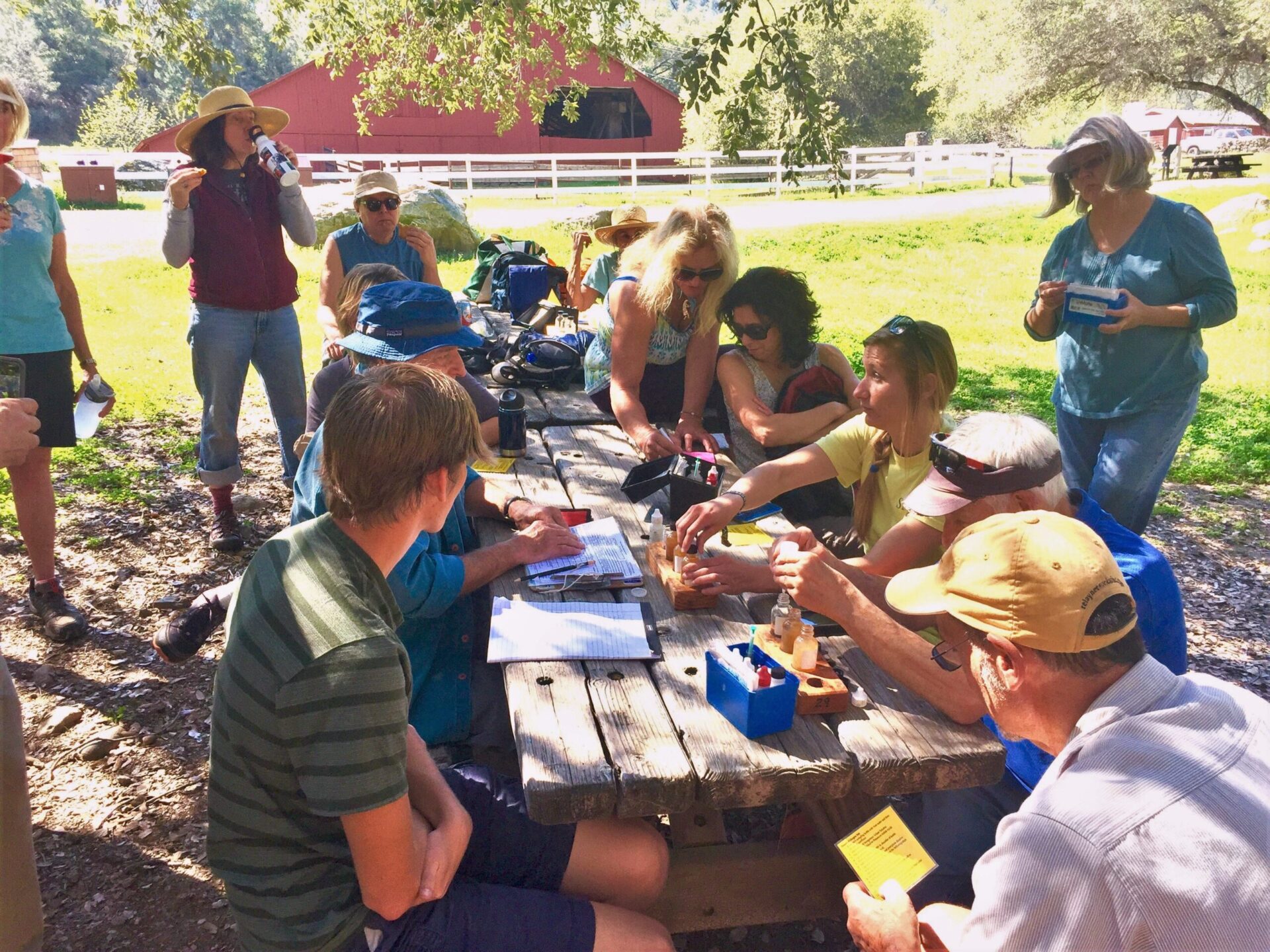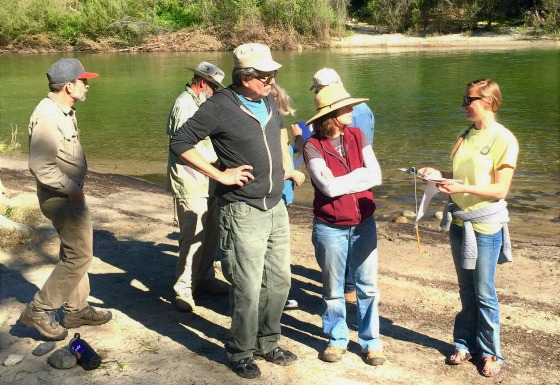SYRCL Volunteers Complete 16th Year of River Monitoring

SYRCL’s citizen/science-driven River Monitoring Program has finished its 16th year of monitoring! The River Monitoring Program has been connecting community members to the river since 2000 with a total of 327 river monitors trained and sent out across the watershed to collect data. This year, 49 active volunteer river monitors collected valuable, scientifically credible information at 40 sites throughout the watershed. This year, our volunteer River Monitors donated over 1600 hours to the effort of collecting data on the health of the watershed!
Each month we collect baseline data across the watershed which includes water temperature, dissolved oxygen, pH, turbidity, conductivity, and the presence of invasive and sensitive species. In addition, volunteers helped with SYRCL’s Safe to Swim study to understand E. coli levels at popular swimming spots, with temperature monitoring, salinity, phosphate, nitrate, and mercury sampling.
Bacteria Sampling: E. coli
After 6 years of monitoring, the State Water Resources Control Board completed a study of E. coli concentrations in the Yuba watershed in 2014 (see below for the full report). E. coli is of concern for swimmers as contaminated waters can make people sick if the water is ingested.

SYRCL has continued to monitor popular swimming holes to ensure that our favorite spots are “Safe to Swim.” The results from 2016 show that Bridgeport, Purdon Crossing, Edwards Crossing, Oregon Creek Swimming Hole, and Highway 49 Bridge met EPA standards for recreational contact (<320 MPN/100mL). However, please always remember that sanitation, such as picking up after your dog, is an issue at the river that we should all take personal responsibility for.
Mercury Sampling

Nevada County was one of the most popular destinations for gold miners during the Gold Rush Era. Small mining operations quickly turned to large scale hydraulic mining, which resulted in massive amounts of sediment being washed downstream and altering the course of the river. During the winter months, SYRCL’s volunteers assist in monitoring mine-impacted streams from the San Juan Ridge Mine, Relief Hill Mine, and Alpha and Omega Diggins on Scotchman Creek. Our mineland monitoring consists of using a variety of hydrologic equipment and EPA Method 1669 Clean Hands/Dirty Hands technique for sampling trace metals and Total Suspended Solids (TSS). With this data, a relationship is built to determine the amount of mercury and sediment passing down these streams throughout the season. A finalized report of Spring and Shady Creek, tributaries from the San Juan Ridge Mine, will be available in 2017.

Temperature Monitoring
Volunteer River Monitors also assisted in deploying 32 temperature loggers throughout the watershed collecting hourly data on water temperature from June through November. These temperature loggers are strategically placed to monitor temperatures above and below dams to document impacts and benefits of FERC licenses (Federal Energy Regulatory Commission), address questions about whether climate change is impacting water temperatures, how tributaries impact temperatures and whether current temperature conditions can support a diverse assemblage of fish. Temperature loggers are being removed even as you read this article, results will be available on Yubashed.org before January 1st. Click here for 2015 results.
Upper South Yuba: Salt and Sand
Every year since 2013 SYRCL has been collecting salinity and turbidity samples along the Upper South Yuba River as it runs along Interstate 80. Cal Trans applies deicers to I-80 during the winter months to maintain safe driving conditions. Unfortunately, 11 miles of the South Yuba run along the I-80 and the impacts of de-icing material have been shown to decrease aquatic insect and fish biodiversity. In areas like Lake Tahoe, total maximum daily loads (TMDL) have been established by the state to reduce the amount of sediment that ends up in Lake Tahoe, we hope to establish limits like this for the Upper South Yuba River.
Nitrates and Phosphates in the Watershed
We are now testing for concentrations of nitrates and phosphates at our water quality monitoring locations. We are specifically concerned about the impacts of cannabis cultivation, septic leaks, and other development impacts. Nitrate and phosphorous levels act like fertilizers within our rivers and streams, increases the abundance of aquatic plants, ultimately changing the available food for and assemblage of insects and fish. Volunteers collect samples every month that are tested for elevated levels of nitrates and phosphates. All 2016 samplings fell below California’s Maximum Contaminant Level (MCL) of 45 mg/L nitrate and EPA’s contact recreational guideline of 0.05 mg/L phosphate.
What to Expect in the Coming Months
All the water quality data will be analyzed over the next couple months and assembled in the 2016 Quality Assurance Report. Before we begin our 17th River Monitoring year we will be looking for volunteers to help with storm sampling—we are looking for folks who are ready and able to scramble down (and back up again) steep slopes while braving the rain, early mornings, and freezing temperatures.

Join our email list (anna@syrcl.org) and watch out for upcoming e-news posts. If you are interested in volunteering, contact Anna Schwyter, our new AmeriCorps River Monitoring Coordinator, at anna@syrcl.org or 530-265-5961 ext. 213.
We couldn’t do this without your continued support!
Did you enjoy this post?
Get new SYRCL articles delivered to your inbox by subscribing to our ENews.



